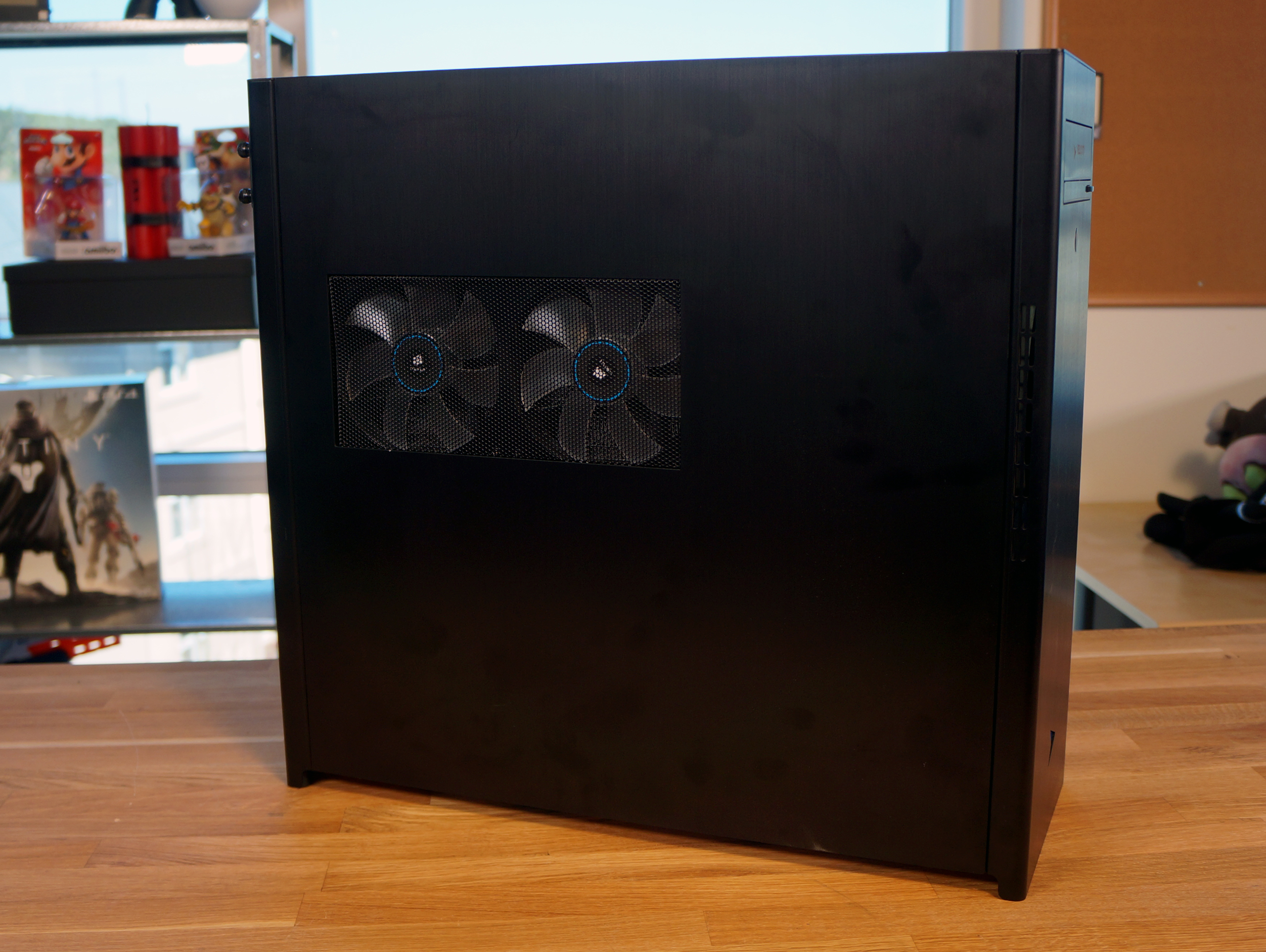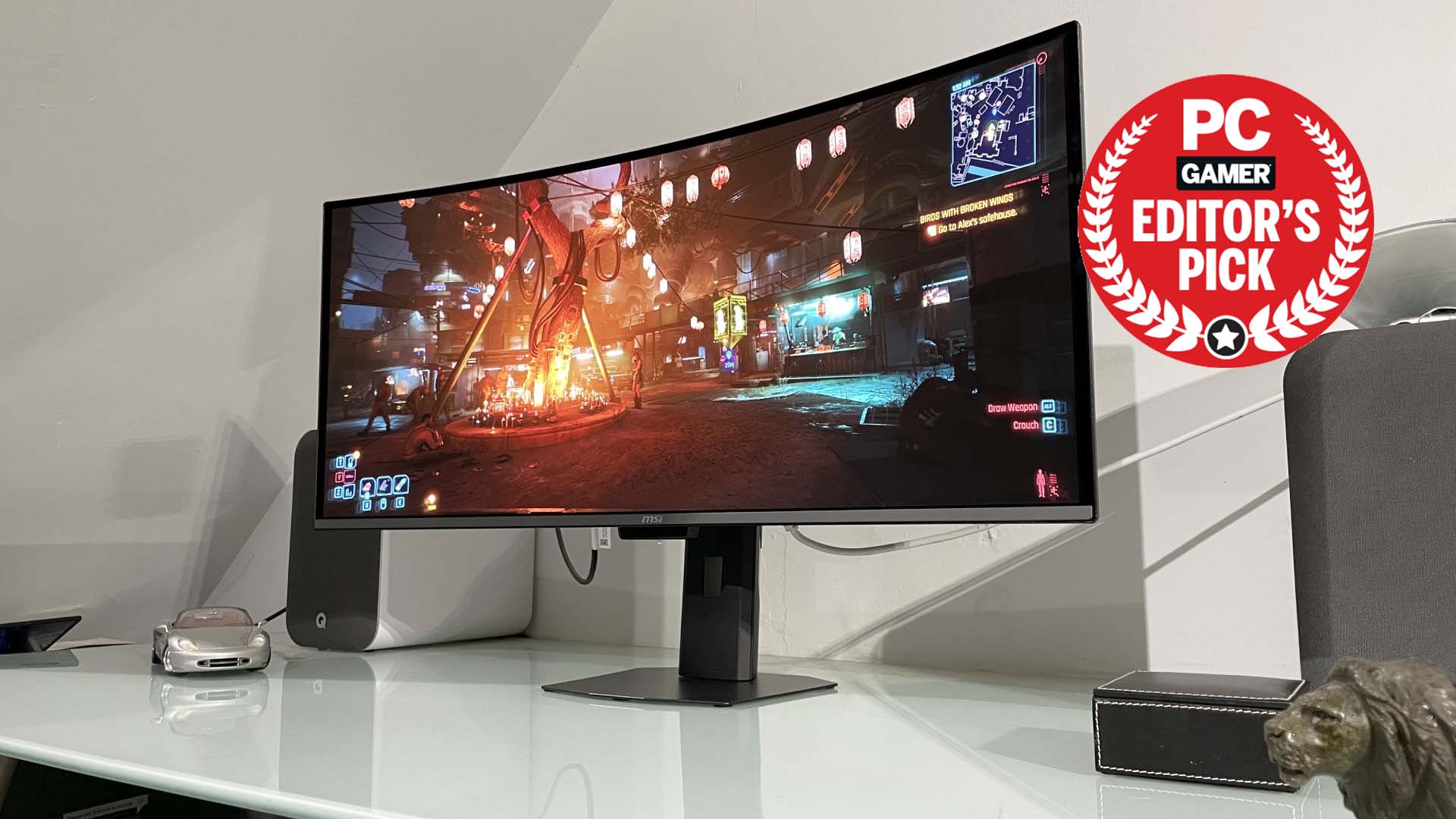Velocity Micro Z55 system review

I’ve always built my PCs myself, but for most of 2015 I’ve been using a decked-out pre-built system from Velocity Micro. Everything I’ve played for the past few months—from CS:GO to Evolve, Cities: Skylines, Shadow of Mordor, and Wolfenstein: The New Order—has been served up by two Nvidia GTX 980s. As you’d expect, it’s been pretty pleasant.
More surprising is how silent the system that Velocity Micro sent us is. Considering it’s stuffed with $1100 worth of graphics, it’s one of the softest-running systems I’ve ever used. We love our LPC super-supercomputer, but two unavoidable shortcomings of that build are its weight (like the Ark of the Covenant, it takes two people to move) and noise. Despite the plentiful liquid cooling we threw into the LPC, every microphone setup we’ve tried with it can’t escape the noise of its many fans.
Velocity Micro’s GX3 chassis, on the other hand, is a stealth submarine. Whatever I threw at the Edge Z55—Arma 3 with everything cranked, 3DMark and other benchmarking tests—it refused to do anything but hum along calmly. The case pulls air through the underside while exhausting out the top. And although the GPUs aren’t watercooled, the Intel Core i7-4790k sits below a 240mm radiator that’s hooked into a closed loop. Together, it’s a cooling solution that does its job without making my room sound like a helicopter pad. The GX3’s solid aluminum body probably plays a part in this good heat management too.
While cooling is a singular strength of Velocity’s proprietary case, its minimalistic design felt like a bit of a mismatch for the $3,800 of components inside it. There’s a standard eight USB ports in the rear (four 3.0, four 2.0), but just another pair alongside two RCA ports in front, facing the top of the case, where they may not be accessible to people with low desks. I wish the top fan had a removable filter, as the bottom slots do—they’re easy to clean, but their material is pretty cheap. The side panel membrane (facing the pair of Corsair CPU fans) also isn’t intentionally removable, but mine had begun to liberate itself a bit from its adhesive. A simple problem to fix, but exactly the sort of thing you expect to never have to worry about when you’re paying so much.
Although it’s a matter of taste, the case also felt like an aesthetic mismatch for the build. I appreciate that plenty PC gamers don’t want a chassis that resembles an over-customized Honda, but the GX3 chassis is absolutely flat and unassuming. It’s a great fit for those who like a modest design, but at almost four grand I expect at least a spoonful of flash.

Tallying it up
A huge component of evaluating a PC from a boutique builder, of course, is how much extra you’re paying for their services, and what you get in return beyond the hardware itself. Naturally, you’re spending more for a pre-built system because you’re paying someone to assemble and test the parts for you, ship the system, and provide some amount of support should your rig spontaneously melt.
Evaluating a pre-built system, then, begins with calculating that differential between what you’d expect to pay if you grabbed the same components off Amazon or Newegg.
Keep up to date with the most important stories and the best deals, as picked by the PC Gamer team.
| Part | Retail price | Type |
| Intel Core i7-4790k | $340 | CPU |
| 2 x 4GB NVIDIA EVGA GeForce GTX 980 | $1120 | GPU |
| Gigabyte Z97X-Gaming 5 ATX | $140 | Motherboard |
| 2 x 250GB SSD | ~$300 | SSD |
| 3 TB 7200 RPM Hard Drive | ~$150 | HDD |
| Lite On Blu-ray Combo | ~$100 | Optical drive |
| 240mm liquid cooler | ~$120 | CPU cooling |
| EVGA 1000-watt G2 | $180 | Power supply |
| 16 GB DDR3-1866 Crucial Ballistix | $130 | RAM |
| Velocity Micro GX3 chassis | (proprietary) | Case |
| 802.11n wireless adapter | ~20$ | I/O |
| Windows | $100 | OS |
| ~$2700 | $3799 (Velocity Micro price) |
That comes out to a rough $2700 before taxes and the price of Velocity Micro's case. This cost, of course, doesn’t directly include the one-year parts and labor warranty that Velocity includes. Velocity also promises “US-based” customer support for sorting out issues remotely. Both are standard among boutique PC dealers, but comforting nevertheless. And a good chunk of that cost goes to Velocity Micro's attention to detail: their machines are hand assembled and expertly cable managed, as you can see in the photo above. And if you ever want to put more money into your machine, you can ship it off to Velocity Micro for cleaning and upgrading.
It's worth noting that the Edge Z55 (now seemingly renamed the Raptor Z55) starts at a more reasonable $1600, with some great parts—an i5-4690K, 8GB of RAM, and a 256GB SSD. Only the graphics card in the starting config, a 750 Ti, is a bit underpowered, but Velocity Micro offers a variety of newer alternatives (both AMD and Nvidia).
Our configuration of the Edge Z55 blew through our benchmarks. Its dual 980s and i7-4790k were good enough to put it in the top 4% of 3DMark’s Fire Strike Extreme benchmark, a score of 9551. In Grid 2, it averaged 174fps, while in the demanding Metro: Last Light it still averaged 65fps at 1920x1200 with every setting cranked. The Z55 boots wonderfully fast, reaching Windows 8.1’s desktop in 22 seconds.
You’d expect a $3,800 rig to perform at least this well. Gaming on the Edge Z55 for most of 2015 has been nothing but pleasant—it's definitely convinced me that ridiculous performance doesn't have to mean putting a wind turbine under your desk, or that your GPUs have to be liquid-cooled in order to mitigate that noise. The cooling of the Z55's case matters most, of course, but I do wish this high-end of a build came wrapped in a sexier skin.
If I ever find myself in a world without screwdrivers, I'd trust Velocity Micro to build me a quiet, reliable high-end PC with great cable management, backed by a decent warranty. For now, the approximate $1000 premium that I'd pay beyond retail is a bit hard for me to stomach.

Evan's a hardcore FPS enthusiast who joined PC Gamer way back in 2008. After an era spent publishing reviews, news, and cover features, he now oversees editorial operations for PC Gamer worldwide, including setting policy, training, and editing stories written by the wider team. His most-played FPSes are Hunt: Showdown, Team Fortress 2, Team Fortress Classic, Rainbow Six Siege, and Counter-Strike. His first multiplayer FPS was Quake 2, played on serial LAN in his uncle's basement, the ideal conditions for instilling a lifelong fondness for fragging.

